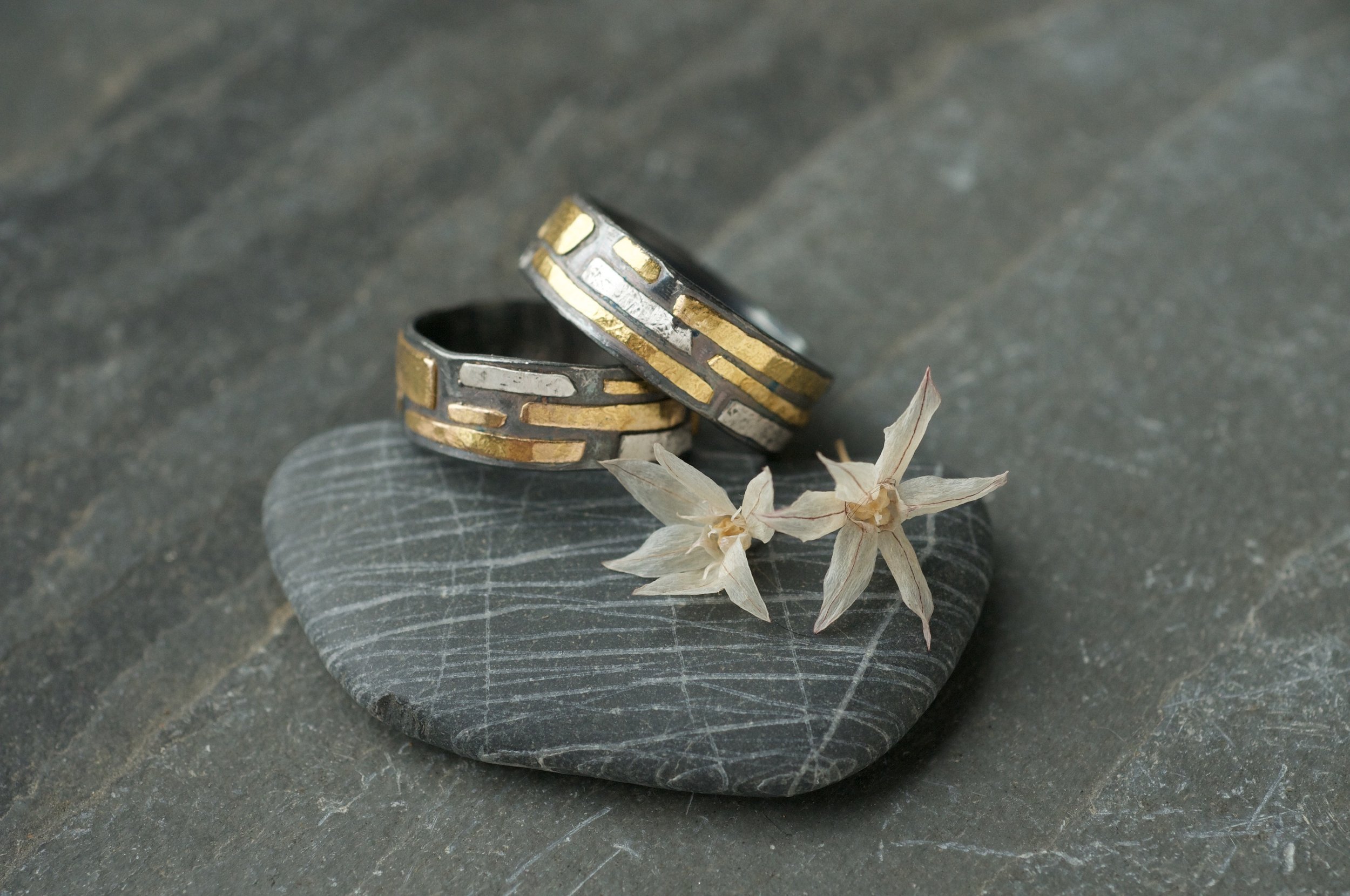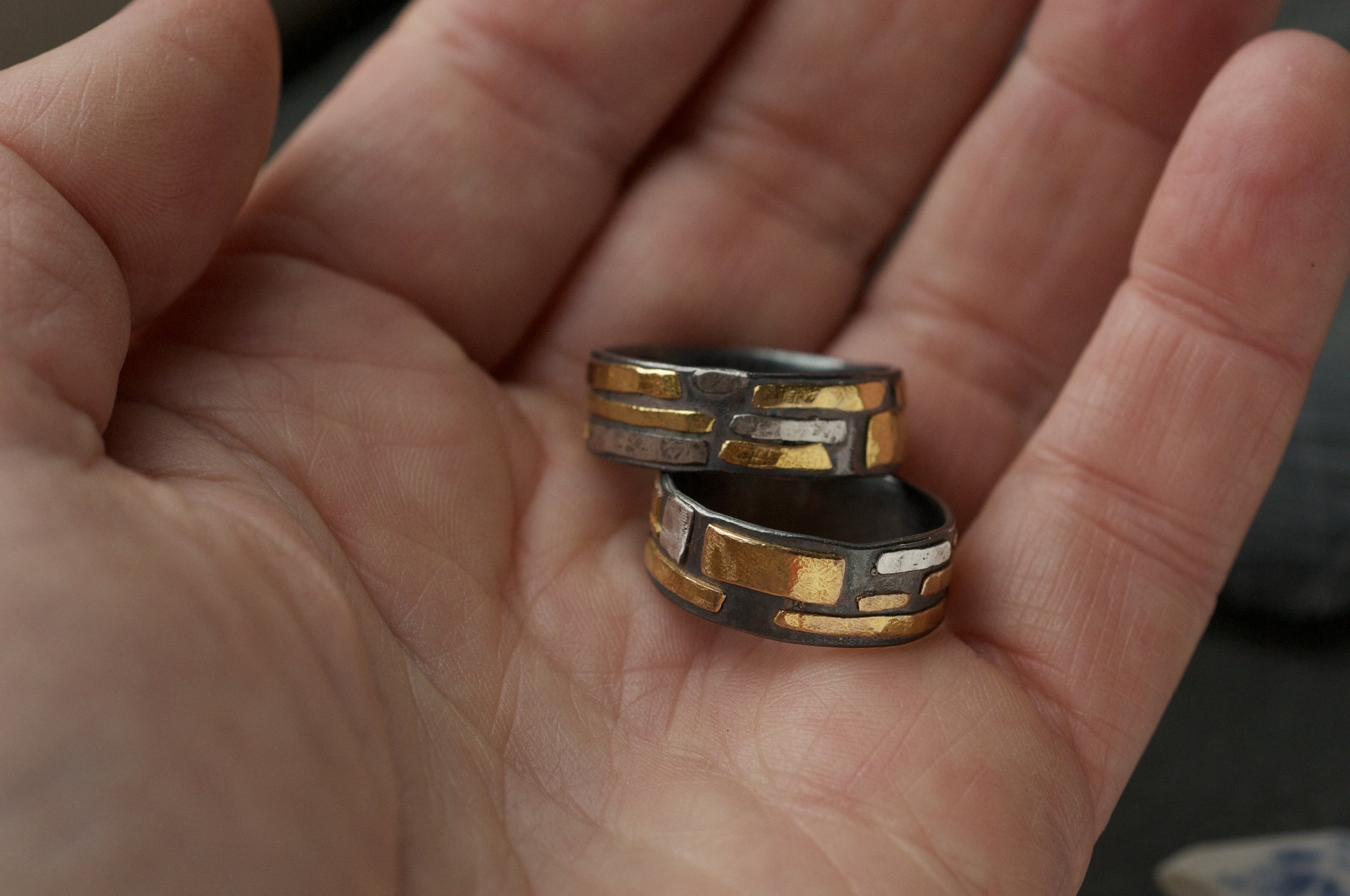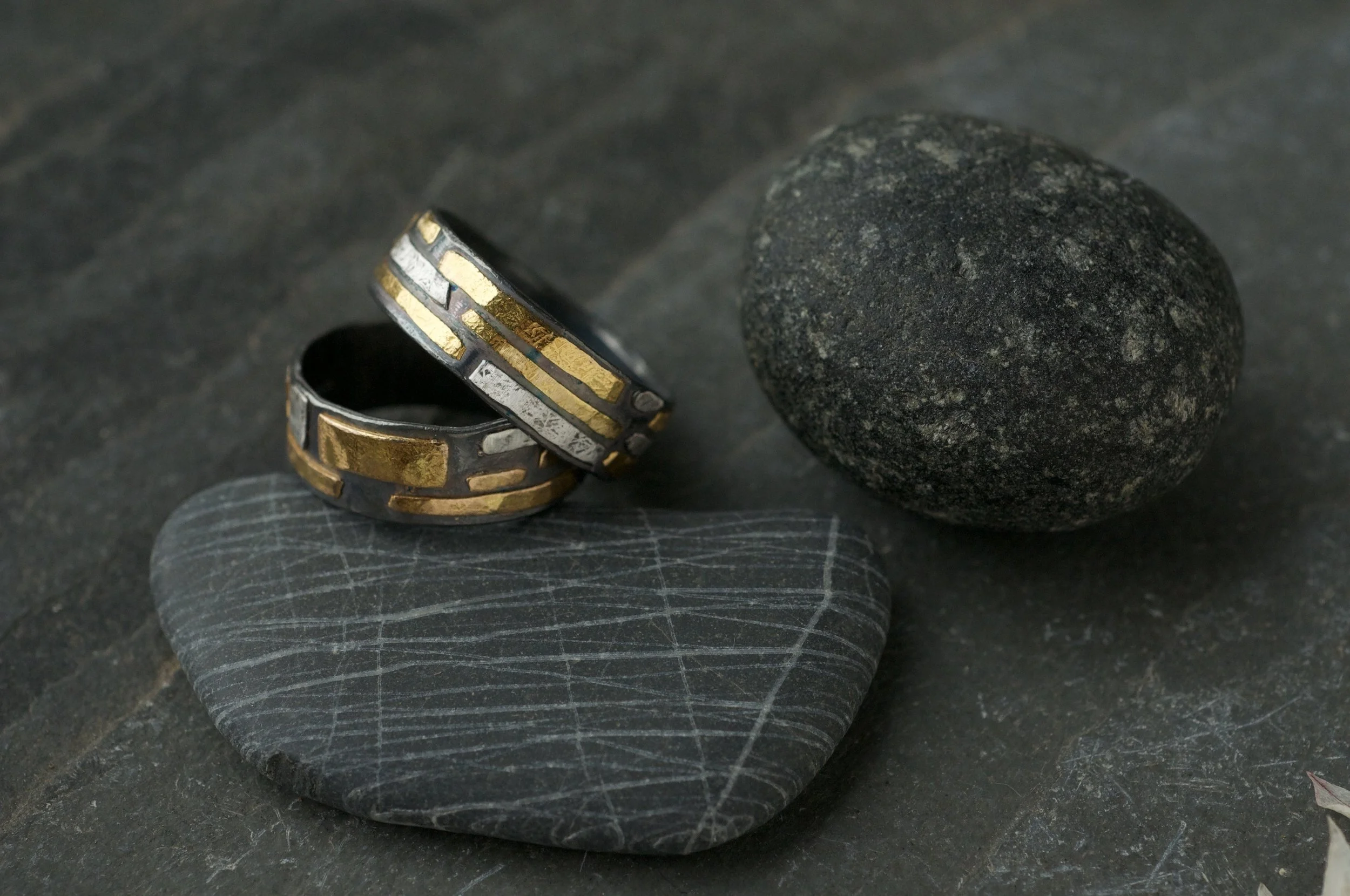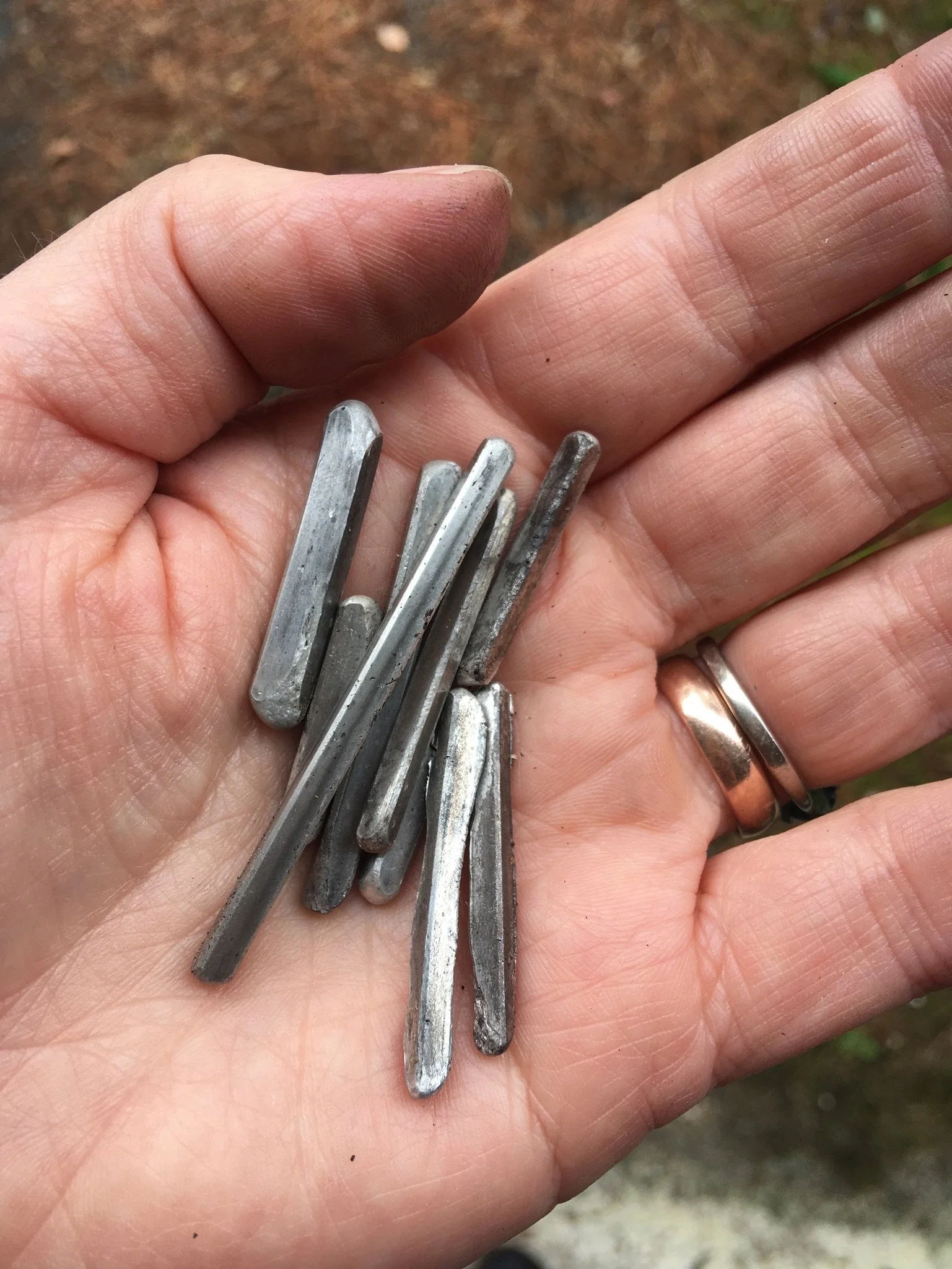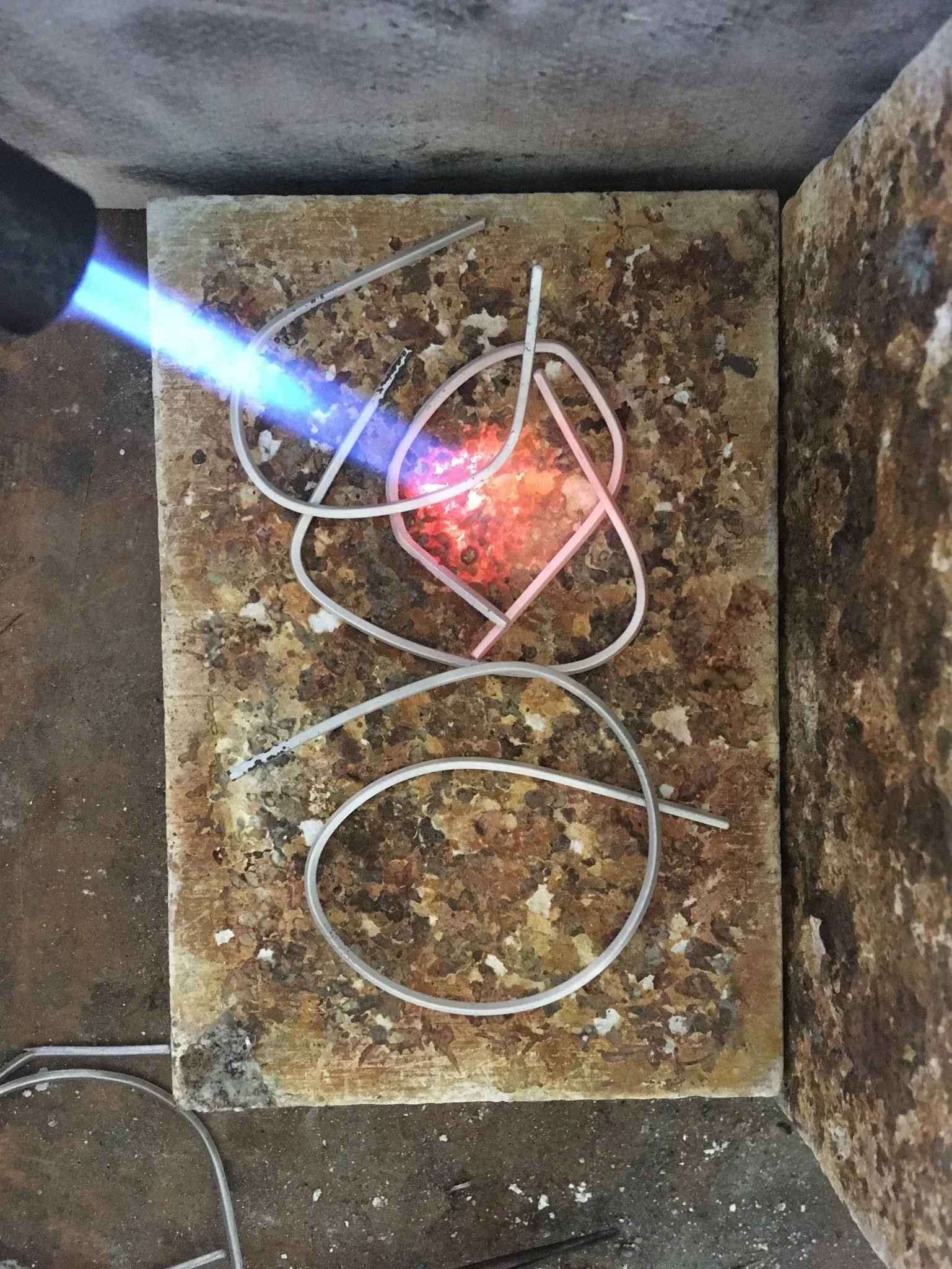Wedding ring commission inspired by the Cornish coast
This year I have worked on some very special commissions incorporating clients’ own gold to produce individual and unique pieces of jewellery including a wedding ring commission inspired by the Cornish coast.
The couple have purchased a few pieces from me in the past and wanted to have rings made which reflect their style and individuality. The original design of the Mylor Ring features little details of gold but in order to make these rings more personal and celebratory, J’s Mum gifted her family wedding ring to be incorporated into the two new rings.
Once cleaned and cut into smaller pieces, the gold ring is melted down in a crucible until molten and flowing when it is poured into a bar. This gold bar then had to be turned into workable material. The bar is cleaned and smoothed of any unwanted snaggy pieces then passed through a rolling mill repeatedly, working down through the sizes which causes the gold to work harden so it has to be annealed to soften it.
Annealing gold is a method of heating the metal until it is cherry red in colour then maintaining the temperature for about 30 seconds without melting it. If it melts, the whole process has to be started from the beginning and a new gold bar formed. If the annealing isn’t done correctly, cracks can appear in the gold as it is worked and that can cause issues with the finished product.
When the gold wire is as fine as I can get it with the rolling mill (about 1.2mm) I can then move on to the next stage. The next process is called ‘pulling down’ and turns the chunkier gold wire into fine gold wire. After annealing the wire to soften it again, I file off one end to make a thin point. The point is then passed through a draw plate and I pull the wire through it using sturdy parallel action pliers (hence the term pulling down). This action is repeated until the wire is the desired diameter.
Photos showing a few stages of the rolling mill process with silver bars.
Once the gold wire is ready, it can then be hammered and applied to the surface of the ring and then soldered in place to create the final design. The black finish is achieved by using liver of sulphur to oxidise the surface which is then polished back to shine up the gold and show off the silver highlights. Each ring is hallmarked at the Birmingham Assay Office with my own makers mark as a stamp of authenticity and quality assurance.
If you are interested in finding out more about commissioning me to create something new from your old jewellery, please get in touch and I will be happy to talk to you about designing and creating a beautiful new piece of work to suit you. For more ideas on commissions I have done, please click here. There is a gallery of images along with personal reviews from previous clients.

